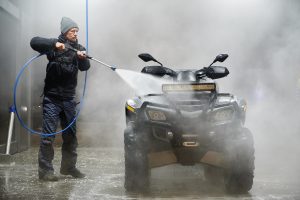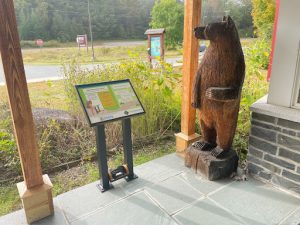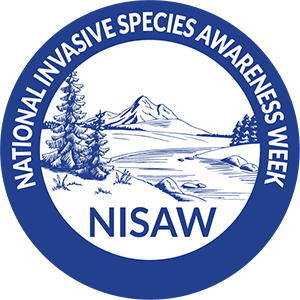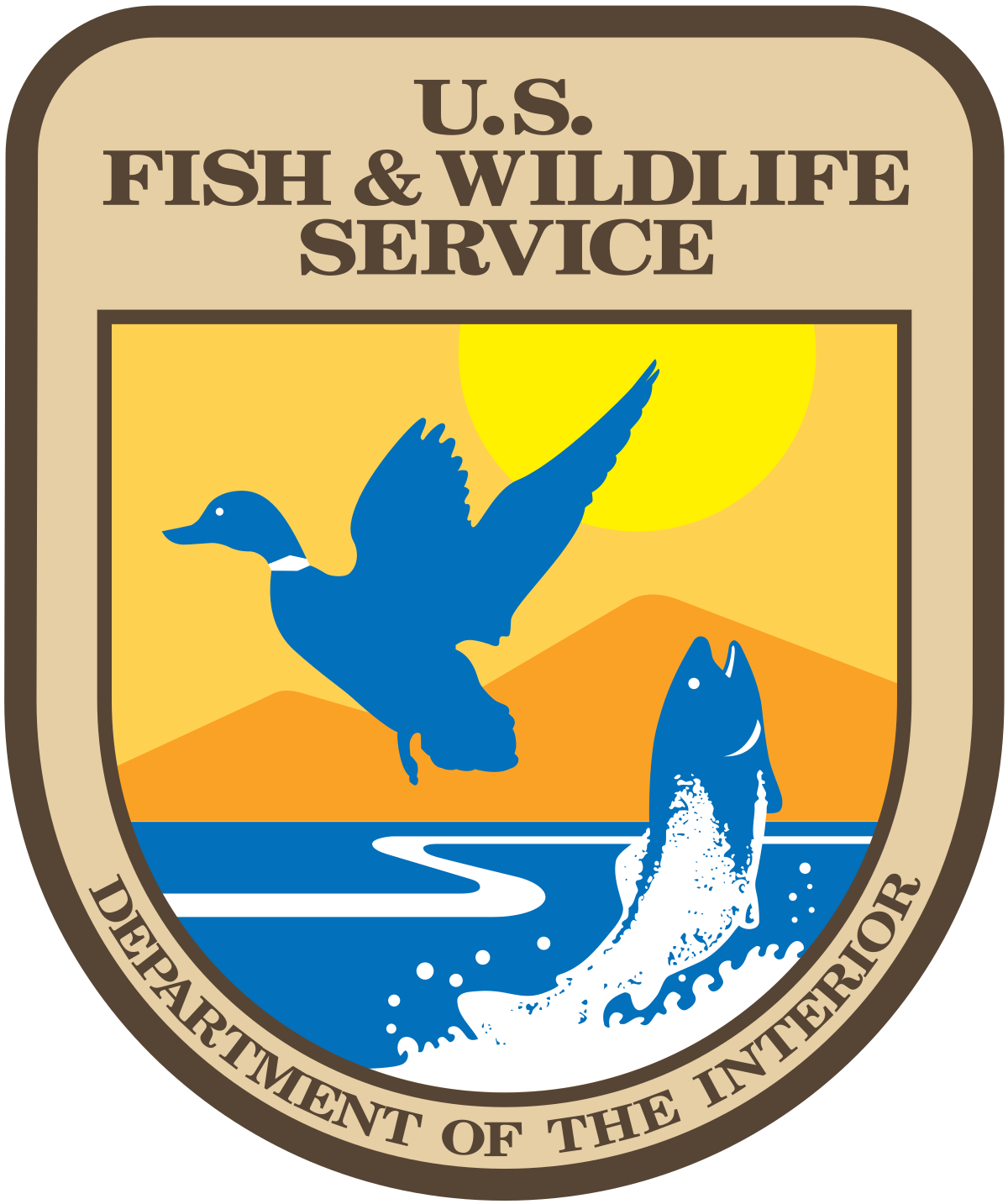If you enjoy hitting the trail with your dog, there’s a risk that you and your dog are helping move invasive plants to new areas. No one knows this better than the handlers of the nonprofit Working Dogs for Conservation. They train high-energy, ball-loving rescue dogs to sniff out weeds, and then travel with the dogs to areas at high risk for invasive species to help with invasive species eradication or mitigation efforts.
You don’t have to train your dog to sniff out invasive plants in order to make a difference, though! You and your dog can help prevent the spread of invasive species with some simple steps every time you go play outside.
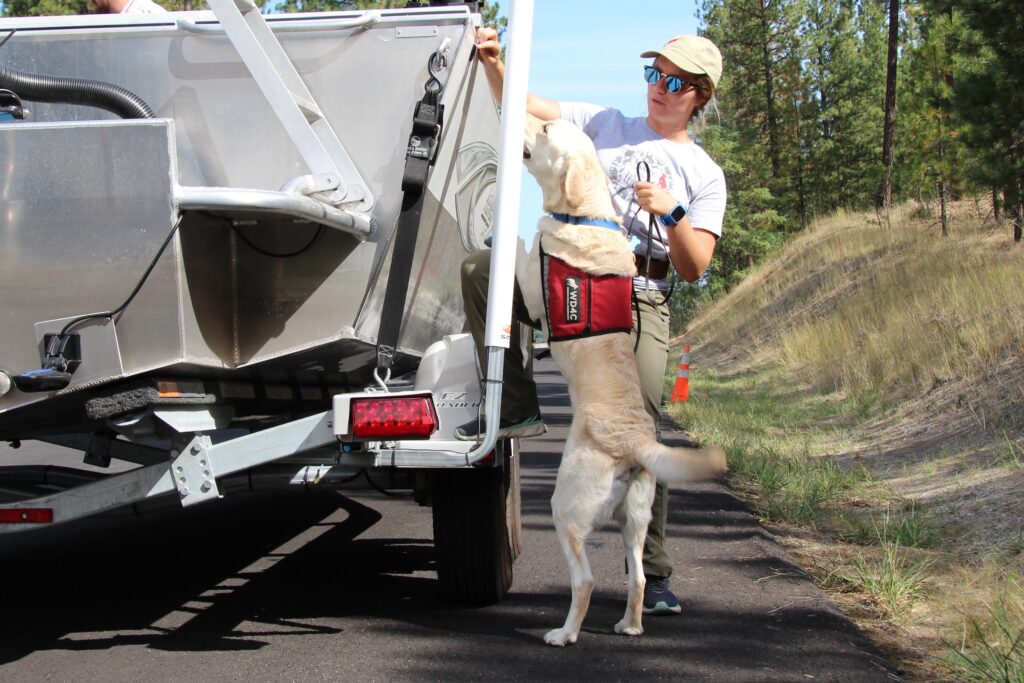
Here are four tips for preventing your pup from becoming a seed carrier, courtesy of Working Dogs for Conservation:
1. Be aware of where you hike.
Some areas are hotspots for a given type of weed. Before you begin your hike, be sure to check signage. This may inform you of a particularly bad species to avoid. Many trail-heads will also offer tips on identification and how to deal with seeds if you do run into the plant. This goes for both people and dogs!
Learn how YOU can take action with these invasive species prevention tips for hikers.
2. Remove obvious burrs, stickers, and seeds right away.
It can be irritating to stop in the middle of your hike for a mini grooming session. But if your dog has a thicker coat than a short-haired pointer or greyhound, trust me—it’s easier to remove burrs and stickers right away. When you notice your dog is covered in seeds, remove them before they become more embedded and tangled. This is especially important with long-haired dogs.
3. Use a brush to remove smaller seeds.
Some seeds are just going to be really difficult to remove by hand. Invest in some grooming tools that work for your dog’s fur. Keep a comb in your car to deal with as many seeds as possible before you leave the trail-head for home. Flea combs and Rotating-tooth combs in particular are really great for long-haired dogs. A bit of conditioner can loosen up seeds as well. Finally, for really tricky burrs, you might just want to trim them out with scissors. For more tips on removing burrs, check out this in-depth article.
4. Wipe down paws.
Just like the mud on your boots may capture seeds, muddy paws can hold tiny seeds. Keep a towel and some spare water in your car and wipe down your dog’s paws, legs, and belly before loading up in the car. While you’re at it, be sure to use a boot brush station.
These efforts should only take a few extra moments, and they can make a huge difference at the places where you hike! The seeds of invasive plants can easily hitch a ride on your dog’s fur to a previously pristine area, harming the ecosystem. Working Dogs for Conservation trains dogs to help protect wildlife and wild places, and we hope this helps train you to do your part in preventing the spread of invasive species.
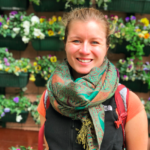
Written by Kayla Fratt
Kayla is the Communications and Outreach Coordinator for Working Dogs for Conservation. Kayla fell in love with training animals early on, but never realized training could be a career path. Instead, she spent six months learning about tropical agriculture in Panama and another six months studying tropical ecology in Ecuador. She earned her bachelors degree in Organismal Biology, Ecology, and Evolution from Colorado College with a concentration in animal behavior. She worked doing communications and outreach for a conservation nonprofit in Colorado before switching gears to work as a dog behavior consultant for several years, helping animal shelters and owners with aggressive, fearful, and high-energy dogs. Although Kayla loved helping owners and their tough-to-handle dogs, she knew she’d really found her calling when she realized she could link her love of biology with her knowledge of dog training and dog behavior with conservation detection dogs. She was a finalist for a Fulbright scholarship to study the selection of conservation detection dogs before joining the team at WD4C.


